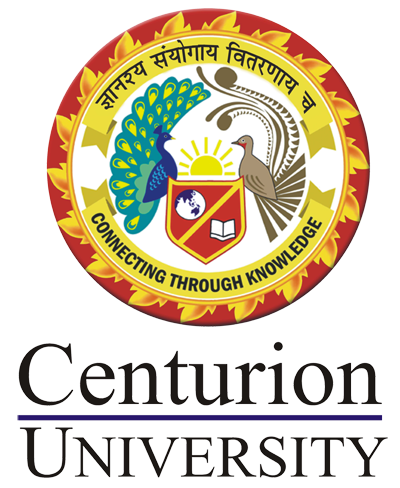Biomolecules
Course Attendees
Still no participant
Course Reviews
Still no reviews
Course Name : Biomolecules
Code(Credit) : CUTM1479 (3-2-1)
Course Objectives
• To Know the basic of Bio-Organic chemistry and its application in industry
• This course gives idea about the structure of different bases of nucleic acid, DNA and RNA.
• Number of amino acids, there functions and the peptide bond that connect di, tri and polypeptides.
• To study about proteins, lipid and carbohydrates
Learning Outcomes
• After completion of the course, students will able to understand regarding the essential and nonessential amino acids and can predict how their ionic charges change with pH.
• They know how enzyme activity is regulated and affected by temperature, pH and concentration in biochemical reaction.
• It also learns about DNA replication, transcription and translation including the role of RNA.
• This course will provide a real value addition for higher study especially for research where one can apply this fundamental chemistry in making new drug molecule against various diseases
• This course gives total idea about the organic chemistry and basic biology and how it will be applicable in Industry
• This course will help students for getting jobs in pharmaceutical industry
and pursue their dream in higher study
Course Syllabus
Module I (8 h)
Nucleic Acids: Introduction of Nucleic Acids, Components of nucleic acids, Nucleosides and nucleotides, Structure, synthesis and reactions of: Adenine, Guanine, Cytosine, Uracil and Thymine, Structure of polynucleotides.
Practice 1: Isolation and characterization of DNA from cauliflower
Practice 2: Isolation and characterization of DNA from onion
Assignment 1: Structure of polynucleotides
Module II (13 h)
Amino acids, peptide and proteins: Introduction to amino acid, peptide and protein, Classification of amino acid and peptides, α-Amino Acids: Synthesis, ionic properties and reactions, Zwitterions, pKa values, isoelectric point and electrophoresis, Study of peptides: determination of their primary structures-end group analysis, methods of peptide synthesis (Synthesis of peptides using N-protecting, C-protecting and C-activating groups -Solid-phase synthesis)
Practice 3: Estimation of glycine by Sorenson’s formalin method
Practice 4: Study of the titration curve of Amino acid
Practice 5: Estimation of proteins by Lowry’s method.
Assignment 2: Reactions, Zwitterions, pKa values, isoelectric point and electrophoresis
Assignment 3: α-Amino Acids: Study of peptides: determination of their primary structures-end group analysis
Module III (6 h)
Enzymes: Introduction, classification and characteristics of enzymes, Salient features of active site of enzymes, Mechanism of enzyme action, Factors affecting enzyme action, Coenzymes and Cofactors and their role in biological reactions, specificity of enzyme action (including stereospecificity), Enzyme inhibitors: Importance of enzyme inhibition phenomenon of inhibition (competitive, uncompetitive and non-competitive inhibition including allosteric inhibition).
Assignment 4: Enzyme inhibitors: Importance of enzyme inhibition phenomenon of inhibition (non-competitive inhibition including allosteric inhibition)
Module IV (10 h)
Lipids: Introduction to oils and fats (Properties and functions), Classes of Lipids (common fatty acids present in oils and fats, Examples of diff. Lipids), Hydrogenation of fats and oils, Saponification value, acid value, iodine number, Reversion and rancidity
Practice 6: Saponification value of an oil or a fat
practice 7: Determination of Iodine number of an oil/ fat.
Module V (8 h)
Concept of Energy in Biosystems: Introduction to metabolism (catabolism, anabolism), ATP: ATP hydrolysis and free energy change, Biological redox systems: NAD+, FAD , Conversion of food to energy, Outline of catabolic pathways of carbohydrate- glycolysis, Fermentation and Krebs cycle, Catabolic pathways of fat and protein, Metabolic pathways of protein, fat and carbohydrate
Practice 8: Extraction of starch from potatoes
Assignment 5: Outline of catabolic pathways of carbohydrate-glycolysis , Fermentation and Krebs cycle
Assignment 6: Catabolic pathways of fat and protein, Metabolic pathways of protein, fat and carbohydrate
Module VI (9 h)
Pharmaceutical Compounds: Structure and Importance: Classification, structure and therapeutic uses of antipyretics: Paracetamol (with synthesis) , Analgesics: Ibuprofen (with synthesis), Antimalarials: Chloroquine, Antibiotics and detailed study of chloramphenicol, Medicinal values of curcumin (haldi), azadirachtin (neem), vitamin C and antacid (ranitidine)
Practice 9: Preparation of triphenylmethanol via Grignard
Practice 10: Handling Pyrophoric Materials like n-Butyl Lithium
Assignment 7: Medicinal values of curcumin (haldi), azadirachtin (neem), vitamin C and antacid (ranitidine)
Module VII (12 h)
Bio-imaging and Bio-Medical science: Introduction to basic cell biology, Optical fluorescent probe and photophysical property, Optical probe for bio-imaging application, Protein labelling, Diagnostic kit and Device fabrication
Practice 11: Live Cell Imaging using small molecular probe
Practice 12: Fluorescent Labeling of COS-7 Expressing SNAP-tag Fusion Proteins for Live Cell Imaging
Assignment 8: Diagnostic kit development
Assignment 9: Device fabrication
Books Recommended:
Berg, J.M., Tymoczko, J. L. and Stryer, L. (2006) Biochemistry. VIth Edition. W.H. Freeman and Co.
Nelson, D. L., Cox, M. M. and Lehninger, A. L. (2009) Principles of Biochemistry. IV Edition. W.H. Freeman and Co.
Murray, R. K., Granner, D. K., Mayes, P. A. and Rodwell, V.W. (2009) Harper’s Illustrated Biochemistry. XXVIII edition. Lange Medical Books/ McGraw-Hill.
Session Plan
Session 1
Session 2 (1h)
Components of nucleic acids, Nucleoside and nucleotide
https://www.youtube.com/watch?v=MA-ouz1LtpM
https://www.youtube.com/watch?v=0lZRAShqft0
https://www.youtube.com/watchv=1Wc4jTH2v_w&list=PL9jo2wQj1WCNG9mFuNBmJ1m7x1skBNKw-
References:
https://www.youtube.com/watch?v=Ux1tAy1Jb_I
https://www.youtube.com/watch?v=GgQrEJaEH0U
Session 3 (1h)
Structure, synthesis and reactions of: Adenine, Guanine, Cytosine, Uracil and Thymine
https://www.youtube.com/watch?v=VXWyWzbigrg
Reference:
https://www.youtube.com/watch?v=4GFKdLy2fOE
Session 4 (2h)
Practice 1 : Isolation and characterization of DNA from cauliflower
Session 5 (Assignment 1, 1h)
Assignment 1: Structure of polynucleotides
https://www.youtube.com/watch?v=r4wD-zS8SWc
Session 6 (2h)
Practice 2 (Module I): Isolation and characterization of DNA from onion
https://www.youtube.com/watch?v=f9hC8lpPNTg
Session 7 (1h)
Introduction to amino acid, peptide and protein
https://www.youtube.com/watch?v=J6R8zDAl_vw
References:
Session 8 (1h)
Session 9 (1h)
α-Amino Acids: Synthesis, ionic properties
https://www.youtube.com/watch?v=CApW6pwYcBA
References:
https://www.slideshare.net/MohamedHassanien/characteristics-and-properties-of-amino-acids-aa
https://www.sciencedirect.com/topics/biochemistry-genetics-and-molecular-biology/alpha-amino-acid
https://www.youtube.com/watch?v=mUVgHhSrps0
https://www.youtube.com/watch?v=42llTiRn-b8
Session 10 (Assignment 2, 1 h)
Reactions, Zwitterions, pKa values, isoelectric point and electrophoresis
https://www.youtube.com/watch?v=vP8h-odjhOI
https://www.youtube.com/watch?v=c2kK4My2Jzc
References:
https://www.slideshare.net/MohamedHassanien/characteristics-and-properties-of-amino-acids-aa
https://www.sciencedirect.com/topics/biochemistry-genetics-and-molecular-biology/alpha-amino-acid
https://www.youtube.com/watch?v=mUVgHhSrps0
https://www.youtube.com/watch?v=42llTiRn-b8
Session 11 (Assignment 3, 1 h)
Assignment 3: α-Amino Acids: Study of peptides: determination of their primary structures-end group analysis
References:
https://www.slideshare.net/PradeepNarwat/determination-of-primary-structure-of-proteins
https://www.youtube.com/watch?v=kgpTA5klkJs
https://www.slideshare.net/Vikassingh106/protein-sequencing-26641228
Session 12
Synthesis of peptides C-protecting and C-activating groups -Solid-phase synthesis
https://www.youtube.com/watch?v=wtUTcehgpZ0
References:
https://www.slideshare.net/PradeepNarwat/determination-of-primary-structure-of-proteins
https://www.youtube.com/watch?v=kgpTA5klkJs
https://www.slideshare.net/Vikassingh106/protein-sequencing-26641228
Session 13 (1h)
Methods of peptide synthesis (Synthesis of peptides using N-protecting)
https://www.youtube.com/watch?v=wtUTcehgpZ0
References:
https://www.slideshare.net/PradeepNarwat/determination-of-primary-structure-of-proteins
https://www.youtube.com/watch?v=kgpTA5klkJs
https://www.slideshare.net/Vikassingh106/protein-sequencing-26641228
Session 14 (2h)
Practice 3 (Module II): Estimation of glycine by Sorenson’s formalin method
Session 15 (2h)
Practice 4 (Module II): Study of the titration curve of Amino acid.
Session 16 (2h)
Practice 5 (Module II): Estimation of proteins by Lowry’s method.
Session 17 (1h)
Introduction, classification and characteristics of enzymes
Session 18 (1h)
Salient features of active site of enzymes
https://www.youtube.com/watch?v=yk14dOOvwMk
https://www.youtube.com/watch?v=c5j6ExHLFD8
References:
https://www.slideshare.net/avinashtiwari18/active-site-of-enzyme
Session 19 (1h)
Mechanism of enzyme action, Factors affecting enzyme action
https://www.youtube.com/watch?v=CP3AVpQeQd4
https://www.slideshare.net/drmustansar/mechanisms-of-enzyme-action
https://www.slideshare.net/namarta28/factors-affecting-enzyme-activity-92404667
Session 20 (1h)
Coenzymes and Cofactors and their role in biological reactions
https://www.youtube.com/watch?v=NHndzLbuEy4
https://www.youtube.com/watch?v=aztVklpxsTo
https://www.youtube.com/watch?v=LK5HzcAOmyA
References:
https://www.youtube.com/watch?v=bubY2Nm7hVM
https://www.slideshare.net/dream10f/lec-4-level-3de-enzymes-coenzymes-cofactors
Session 21 (1h)
Enzyme inhibitors: Importance of enzyme inhibition phenomenon of inhibition (competitive and un-competitive)
https://www.youtube.com/watch?v=cKzBpkiOrZg
References:
https://www.youtube.com/watch?v=0ZiCqwtFMTs
https://www.youtube.com/watch?v=05FGg4cCS4M
https://www.slideshare.net/ranajni_09/enzyme-inhibition-42561782
Session 22 (Assignment 4, 1h)
Enzyme inhibitors: (non-competitive inhibition including allosteric inhibition)
https://www.youtube.com/watch?v=0ZiCqwtFMTs
https://www.youtube.com/watch?v=05FGg4cCS4M
https://www.slideshare.net/ranajni_09/enzyme-inhibition-42561782
Session 23 (1h)
Introduction to oils and fats (Properties and functions)
https://www.youtube.com/watch?v=HYvA-vMf708
References:
https://www.eufic.org/en/whats-in-food/article/facts-on-fats-the-basics
https://www.ifst.org/resources/information-statements/oils-and-fats
Session 24 (1h)
Classes of Lipids (common fatty acids present in oils and fats, Examples of diff. Lipids)
https://www.youtube.com/watch?v=kNDh1Ba0U9k
https://www.youtube.com/watch?v=3z4XNWCnY-I
Reference:
Session 25 (1h)
Session 26 (1h)
Session 27 (1h)
Acid value, iodine number
Session 28 (1h)
Reversion and rancidity
https://www.youtube.com/watch?v=QMaFah_mq6A
https://www.youtube.com/watch?v=epP-CP1fKu0
Reference:
Session 29 (2h)
Practice 6 (Module IV): Saponification value of an oil or a fat
Session 30 (2h)
Practice 7 (Module IV): Determination of Iodine number of an oil/ fat.
Session 31 (1h)
Concept of Energy in Biosystems: Introduction to metabolism (catabolism, anabolism)
Session 32 (1h)
Concept of Energy in Biosystems: Catabolism and anabolism
Session 33 (1h)
ATP: ATP hydrolysis and free energy change, Biological redox systems: NAD+, FAD
Session 34 (1h)
ATP: Conversion of food to energy
https://www.youtube.com/watch?v=rtTq7dylLJ8
Session 35 (Assignment 5, 1h )
Outline of catabolic pathways of carbohydrate- glycolysis , Fermentation and Krebs cycle
https://www.youtube.com/watch?v=rtTq7dylLJ8
Session 36 (Assignment 6, 1h)
Catabolic pathways of fat and protein, Metabolic pathways of protein, fat and carbohydrate
https://antranik.org/the-catabolism-of-fats-and-proteins-for-energy/
Session 37 (2h)
Practice 8 (Module V): Extraction of starch from potatoes
Session 38 (1h)
Pharmaceutical Compounds: Structure , Importance, and Classification
Session 39 (1h)
Structure and therapeutic uses of antipyretics: Paracetamol (with synthesis)
Session 40 (1h)
Analgesics : Ibuprofen (with synthesis)
Session 41 (1h)
Antibiotics and detailed study of chloramphenicol
Session 42 (Assignment 7, 1h)
Medicinal values of curcumin (haldi), azadirachtin (neem), vitamin C and antacid (ranitidine)
Session 43 (2h)
Practice 9 (Module VI): Preparation of triphenylmethanol via Grignard
Session 44 (2h)
Practice 10 (Module VI): Handling Pyrophoric Materials like n-Butyl Lithium
Session 45 (1h)
Introduction to basic cell biology
Session 46 (1h)
Optical fluorescent probe and photo physical property
https://www.youtube.com/watch?v=3ev_TnFE2to
Session 47 (1h)
Optical probe for bio-imaging application
https://www.youtube.com/watch?v=3ev_TnFE2to
Session 48 (1h)
Session 49 (Assignment , 2h)
Session 50 (Assignment, 2h)
Session 51 (2h)
Practice 11 (Module VII): Live Cell Imaging using small molecular probe
Session 52 (2h)
Practice 12 (Module VII): Fluorescent Labeling of COS-7 Expressing SNAP-tag Fusion Proteins for Live Cell Imaging
Case Studies
Case Studies
Our Main Teachers

Srikanta Sahu completed his Ph.D. from IIT Delhi in Bio-organic chemistry under the supervision of Prof. V. Haridas. After his PhD, he moved for postdoctoral work at National University of Singapore (NUS) in the field of Bio-medical science and chemical biology under the guidance of Prof. Young Tae Chang. Later, he joined as a core […]

